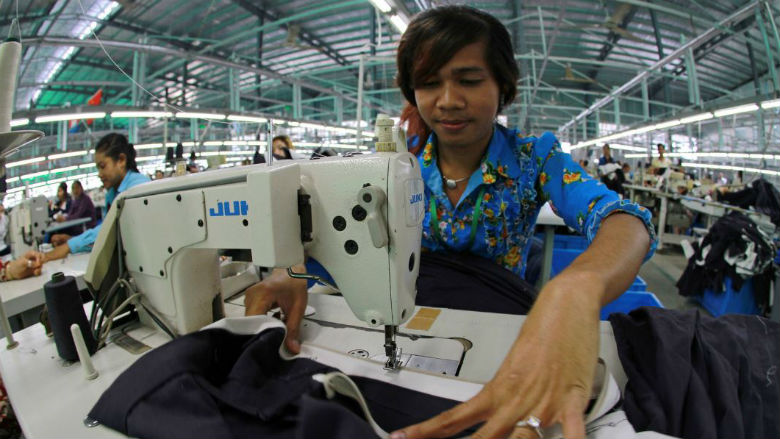Key Findings
- Growth is projected to reach 7 percent in 2016, which is slightly higher than an earlier estimate of 6.9 percent, propelled by exports, construction, and government consumption. Tourism eased while agriculture is likely to expand due to better weather conditions.
- The economy is expected to sustain a high growth trajectory, growing 6.9 percent in 2017 and 2018, partly due to government spending. Solid garment exports should continue while the construction sector is expected to slow only gradually. The tourism and agriculture sectors may expand modestly.
- Resilient exports and depressed oil prices contributed to a narrowing of the trade deficit, supporting the country’s overall external position.
- Although there are signs of slowing, in particular in the micro-finance sector, the banking sector’s credit growth remained high at 26.9 percent year-on-year by mid-2016.
- Expansionary fiscal policy started in 2016 while strong revenue collection continued. The overall fiscal deficit (including grants) is expected to widen to 1.2 percent of GDP in 2016.
- In the medium term, the favorable outlook is likely to continue, strategically underpinned by regional integration.
- Risks include fallout from a rise in US interest rates, slower global growth and potential uncertainty related to commune and general elections in 2017 and 2018.
- Poverty is expected to continue declining over the next few years, driven mainly by growth in the garment, construction, and services sectors in urban areas. The agriculture sector, which was the main driver of poverty reduction in the past, has recently eased.
Policy Options
- Devising a concrete plan to improve competitiveness and diversify export sectors, given the potential negative impacts on garment exports of the EU-Vietnam Free Trade Agreement.
- Promoting local participation in the garment industry among domestic investors or encouraging more joint ventures between domestic and foreign investors.
- Mitigating the risks associated with the construction boom. Positive initial steps have been made to monitor and regulate housing development.
- Developing tourism further as a growth engine by diversifying tourist attraction sites beyond the Angkor Wat complex.
